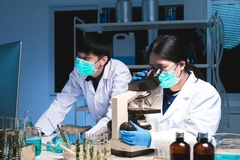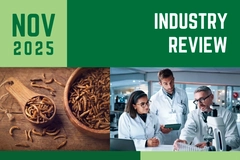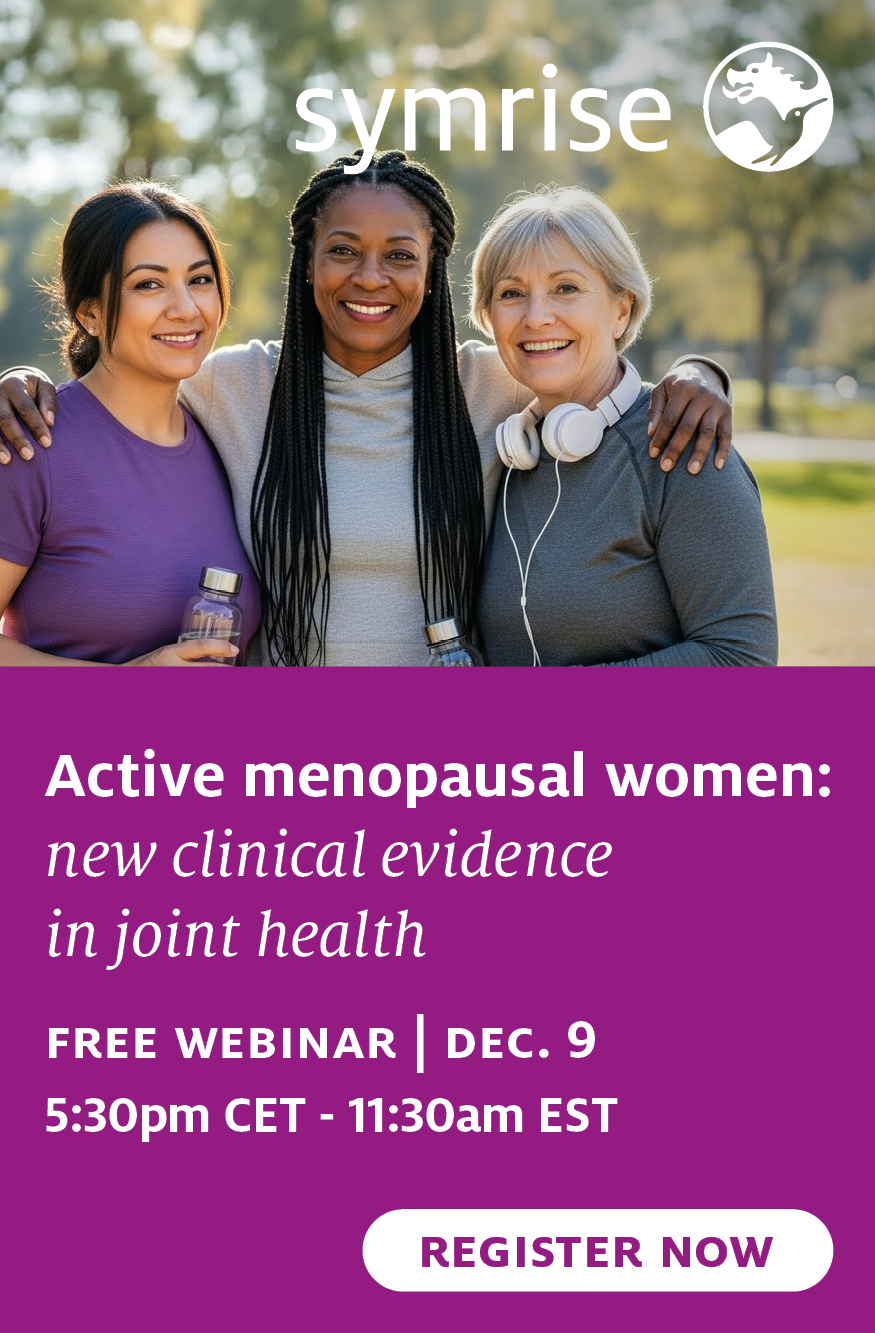Innovative food tech: Nuvilab’s AI meal scanners boost healthy nutrition
01 Feb 2024 --- To promote healthy eating and minimize food waste, data insights company Nuvilab has developed AI food scanners for the food service industry. With applications in schools, healthcare and cafeterias, these scanners assess nutrient and food consumption to manage waste, patient meal quality and food inventory.
Nutrition Insight sits down with two Nuvilab professionals, SuhWoo Jung, global marketing manager, and Hyunjong Lee, global business development manager, to examine how the scanners work and the benefits they provide.
“We provide AI-backed food insights based on data that we receive from the food services industry, such as restaurants, cafeterias, daycare centers, schools and hospitals. We aim to provide insights to foster healthy nutrition habits in our users and reduce the carbon emissions produced by limiting food waste in the kitchen,” highlights Jung.

The South Korea-based company offers three types of AI Food Scanners for food service companies. The basic version is used in schools and hospitals to identify individual nutrients consumed, while the AI Food Scanner Pro can be placed in commercial kitchens to help manage the types of food produced. The company’s AI Food Scanner Air can be mounted above a conveyor belt to help managers identify customer meal preferences and offer tailored suggestions.
“We do two scans — one pre-meal and one post-meal — and compare the two to help people identify the type of nutrients they are lacking and what caloric intake they have,” explains Jung.
For the company, food waste and nutrition are interlocking aspects of the same point, highlights Lee. “We check how much is given and left, then you can calculate it back, and you know how much is eaten. We plug in the nutritional information and carbon emission aspects on the waste side to give out different insights.”
How does it work?
Lee explains that the company’s scanners use two types of sensors — a flat image RGB camera and a 3D stereo depth camera.
“With the RGB camera, we classify the individual food item that has been detected from the sensors, and then the in-depth information would recognize how far away from the sensor the food items are.”
“Hence, we recognize the volume, then plug in our food data and density information to calculate the quantity or weight of the food items. When those two information sets come together, we can recognize how much of what food is being detected.”
.jpg) The AI tool scans food pre-meal and post-meal, comparing the two to assess nutrient and meal intake.At the same time, he highlights that the scanners have some limitations. “To simplify it, think of it as similar to human eyes. If it’s something beyond human recognition, it will be a little bit different. For example, it won’t be able to distinguish between pineapple juice and orange juice because they’re both yellow.”
The AI tool scans food pre-meal and post-meal, comparing the two to assess nutrient and meal intake.At the same time, he highlights that the scanners have some limitations. “To simplify it, think of it as similar to human eyes. If it’s something beyond human recognition, it will be a little bit different. For example, it won’t be able to distinguish between pineapple juice and orange juice because they’re both yellow.”
To improve the functionality of its scanners, Nuvilab adds data provided by its clients, which depend on the goals and targets for which a scanner is used. For example, Lee explains that for people trying to lose weight and eat healthier, it may be sufficient to have a general idea of the calories and nutrients in a cheeseburger.
“However, we’re also in sports teams and hospitals, which require precise recognition of nutrition,” he underscores. “In many cases, they already keep track of the nutritional intake of their people of interest. But they’re doing it in a very inefficient way. We plug all that information into our system and then proportion the intake rate.”
Application areas
Nuvilab operates its core product, the AI Food Scanner Basic, in around 70 schools and daycare centers to provide nutritional intake data for children and increase the awareness of ESG (environmental, social and corporate governance). The scanner is also applied in the cafeterias of different corporations.
“For the daycare centers, we provide a weekly or monthly report for the parents so that they identify what nutrients their children are lacking or which type of meals they like so that they could enhance their nutrient intake at home,” details Jung, “or the nutritionist in schools and hospitals could fulfill those nutrients by providing a different type of meal.”
Lee adds that Nuvilab applies different filters to its nutrition analysis, depending on a client’s needs. “For example, in Korea, musculoskeletal growth of the children is perceived as very important. We have macronutrient and micronutrient information on what type of food might help with that aspect for children. We have that filter applied to the daycare centers and kindergartens.”
He explains that these filters are set up based on inputs from dietitians and nutritionists Nuvilab’s clients work with.
Healthcare setting
Nuvilab recently announced it will expand its healthcare services at the Alexandra Hospital in Singapore, where the AI Food Scanner scans a patient’s meal tray as a more effective and accurate way to analyze individual food and nutritional intake. Typically, 24-hour recall methods are used for diet recording.
“After a testing period, Alexandra Hospital is ready to fully expand Nuvilab solutions to increase the number of beds in its facilities that use them,” shares Jung. “We’re trying to decrease the nurses’ work so they can focus more on their patients.”
.jpg) The Alexandra Hospital in Singapore uses the AI Food Scanner to analyze a patient’s food and nutritional intake more effectively and accurately.Nuvilab’s experts note that the increasing workload of hospital staff leaves less time to assess what food is left after consumption.
The Alexandra Hospital in Singapore uses the AI Food Scanner to analyze a patient’s food and nutritional intake more effectively and accurately.Nuvilab’s experts note that the increasing workload of hospital staff leaves less time to assess what food is left after consumption.
“Overall, globally, many studies say that even for skilled dieticians and nutritionists, their accuracy hovers around 50%,” details Lee. “Not because they lack competency, but because they are so busy, they must make it quickly. What we found in the Alexandra Hospital is that we hovered around 90% accuracy. That is being conservative.”
“Traditionally, they make these assessments by weighing the food items. This is slow and inefficient, where we solely rely on vision sensors, making it much lighter and easier to implement.”
Similarly, last year, researchers used AI to assess diets in Canadian long-term care homes, which determined how to enhance the healthfulness of menus, which could also support chronic disease management. According to the AI used, adding more whole grains, plant-based proteins and plain fruits and vegetables would help residents meet government guidelines and reduce the risk of inflammation.
Development plans
In addition to implementing Nuvilab’s scanners in South Korea and Singapore, Jung and Lee note that the company aims to expand its global reach. Jung shares that Nuvilab is currently conversing with a US healthcare provider.
“The biggest market in monetary value lies in the US,” adds Lee. “But if we think of the policies, regulations and general trends in the globe, we’re looking into the European market as well because that’s where things are happening quickly.”
“Our view is to make a stand in Korea and Asian markets, expand into the North American market and then adapt into the European market.”
In addition, the company hopes to venture into the 2D realm in 2024, using mobile devices, phones or tablets to have the same functionality and data its 3D scanners provide. “We have robust 3D data to ensure the accuracy and quality of the food recognition,” concludes Lee.
By Jolanda van Hal














